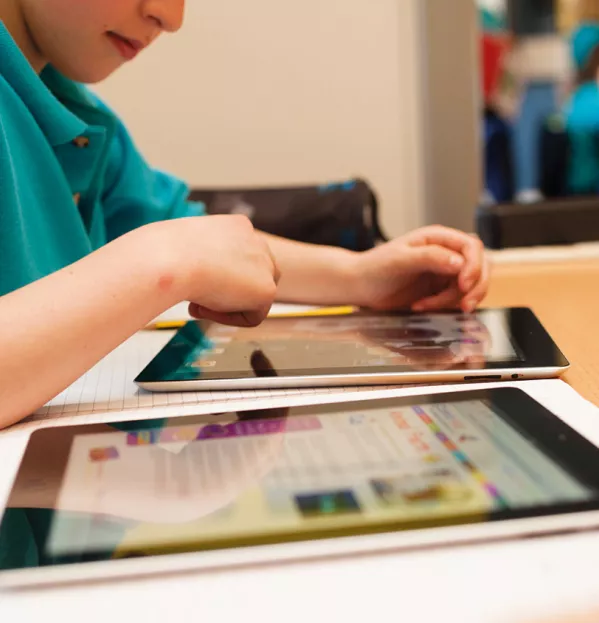‘Digital divide’ is opening up among schoolteachers

The “digital divide” among pupils is a well-known factor in Scotland’s attainment gap between rich and poor. But the failure of many teachers to get to grips with new technology may be worsening the problem - and leaving students at a further disadvantage.
A Tes Scotland Twitter poll suggests that nine in 10 teachers feel they do not have the tools they need to make the most of technology in their classrooms. The result chimes with messages coming out of the Learning Through Technology conference, held in Edinburgh last week. The event provides an annual litmus test of how well technology is being applied in classrooms.
At the conference, the use of certain online tools was shown to drive up attainment in key subjects, such as maths. And aficionados, such as Midlothian Council digital learning guru Tommy Lawson, argued that, in the same way drugs are increasingly being tailored to individual needs, technology has the potential to personalise learning. It could also help to get parents more involved in their children’s education than ever before, Lawson added.
But Charlie Love - who is driving forward digital learning in Aberdeen schools - summed up the feeling of many when he said: “The world has moved on in terms of its use of technology and social media, but there has been very little change [in the use of technology] in the classroom.”
According to a number of speakers, it has become apparent that the “digital divide” in education no longer simply describes the gap between pupils who have access to tablets, smartphones and broadband, and those who do not. Now, the term is also being used to describe the gulf between teachers who embrace technology in their classrooms and those who do not. And concerns were expressed by delegates that the latter risked seriously disadvantaging their pupils.
‘Confidence with technology’
Finding ways to get those staff on board was the preoccupation of many delegates, including secondary head Alan Horberry. Fears were also raised by others that councils had spent huge sums of money on kitting out classrooms with interactive whiteboards - estimated to cost about £2,000 per class - that were often used as “glorified projectors”.
Horberry, of Banff Academy in Aberdeenshire, said: “Over the past two decades, a digital divide has been growing in the sense that many professionals have forged ahead with digital learning, but there is a significant number who have not, and that is manifested in the youngsters’ experiences.”
For Helen Gorman, a science and technology faculty head seconded to Stirling Council to promote digital learning, this is also a key issue. A “big difference between teachers in terms of their confidence with technology” had become apparent, she told delegates, adding that this “results in big differences between schools and classrooms in a school and clusters. We are not getting an equitable high-quality experience for every learner.”
A lack of training and support was cited as a major issue among teachers responding to the Tes Scotland poll. They talked about receiving no guidance on how to use the interactive whiteboards and Promethean boards installed in their classrooms. One respondent also bemoaned the loss of IT staff at council level as a result of budget cuts.
There was no excuse in 21st-century education for a teacher saying “I don’t do digital”, Gorman told the Edinburgh conference, but she said staff needed to be better supported.
Ty Goddard, chair of Edtech UK, advocated getting less enthusiastic staff on board by highlighting the advantages. “What is the lens that reluctant teachers are looking at tech through?” he said. “Do they lack confidence, are they afraid of being shown up, or can’t be bothered? We have to articulate the advantages [of edtech] in terms of [reducing] workload and linking with the community. The amount of free curriculum material [available to teachers] is staggering.”
Love said that, in Aberdeen, a combination of investment in infrastructure, devices - in this case, Chromebooks - and training had led to “incredible growth in digital learning” in his authority’s schools. But he added that councils, like teachers, were forging ahead with digital learning at a varying pace.
Brian Clark, an education officer for digital skills at Education Scotland, said the curriculum development and inspection body was aware of “a need for equity across the local authorities”. He added that the organisation was trying to engage with local authorities to help them upskill staff, and to “develop the vision for digital learning”.
As far as Joanna Maclean is concerned, this cannot happen fast enough. Pupils at Glasgow independent school Kelvinside Academy, where she is head of e-learning, all bring their own devices and each teacher is given an iPad.
Working wi-fi, pupils using devices and staff training should be basics in all schools, Maclean says; the alternative is to risk a new attainment gap opening up between those who have their education enhanced by digital learning and those who do not. She adds: “[Government figures] talk about the attainment gap, but they are creating a bigger attainment gap by not having these students with a device.”
You need a Tes subscription to read this article
Subscribe now to read this article and get other subscriber-only content:
- Unlimited access to all Tes magazine content
- Exclusive subscriber-only stories
- Award-winning email newsletters
Already a subscriber? Log in
You need a subscription to read this article
Subscribe now to read this article and get other subscriber-only content, including:
- Unlimited access to all Tes magazine content
- Exclusive subscriber-only stories
- Award-winning email newsletters